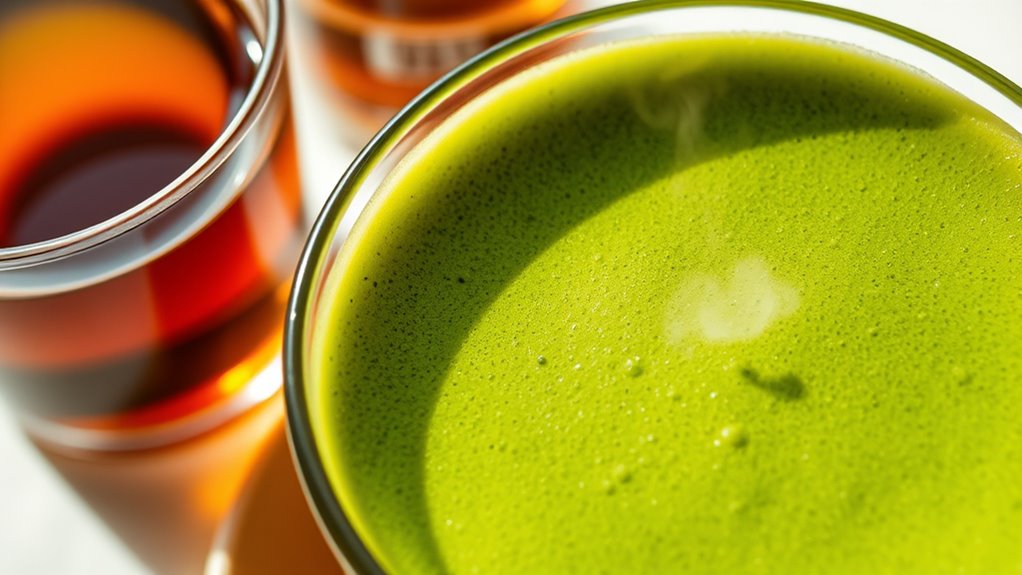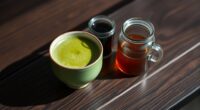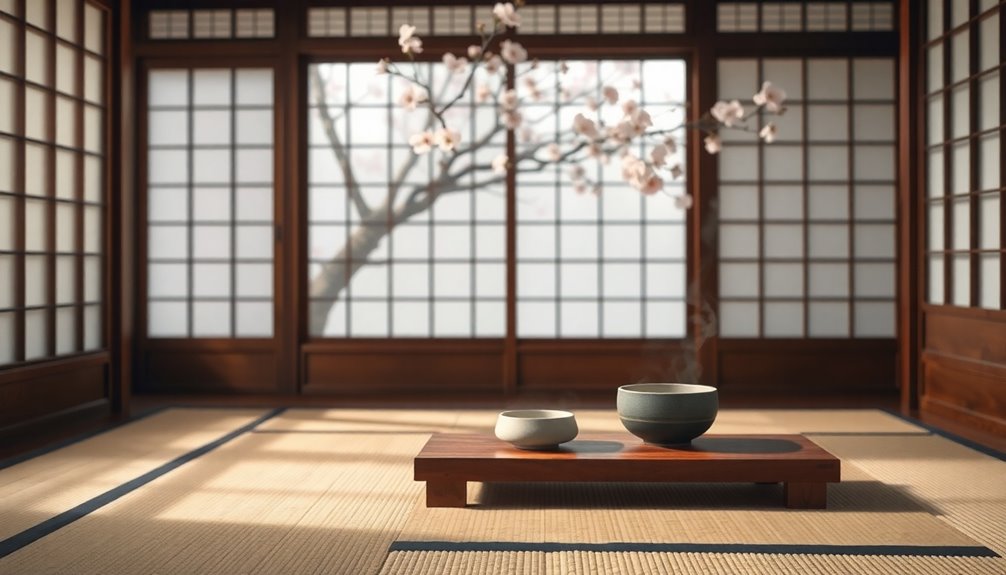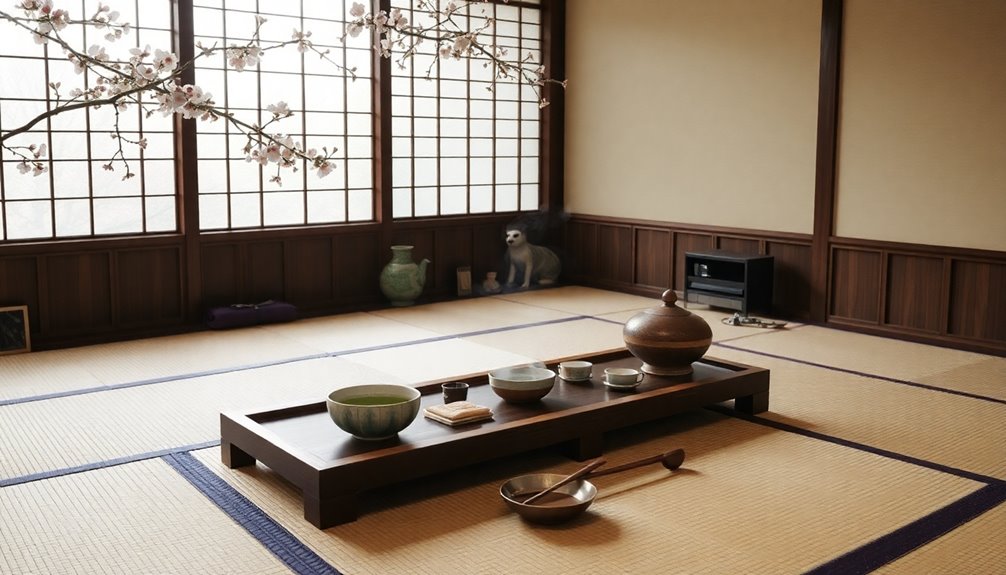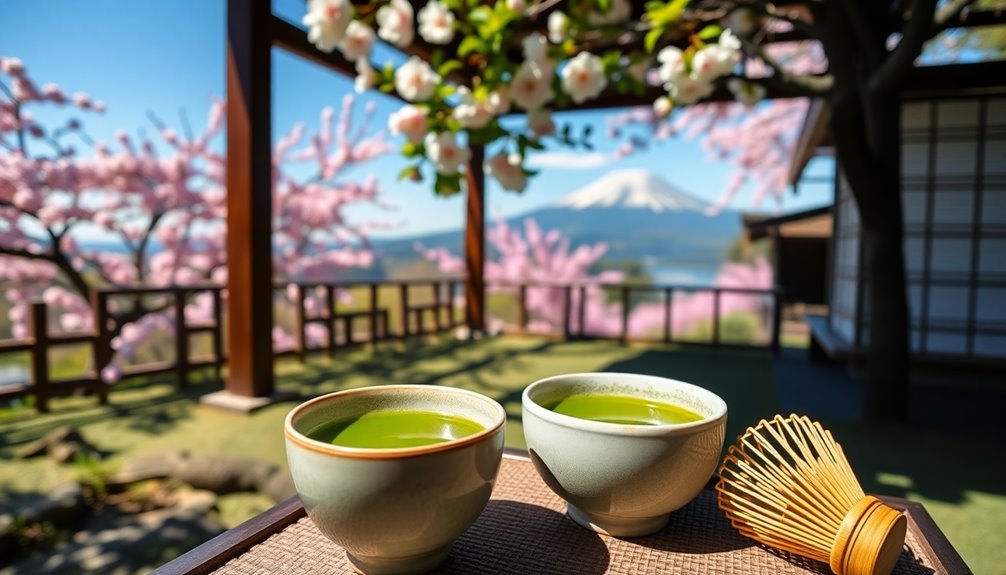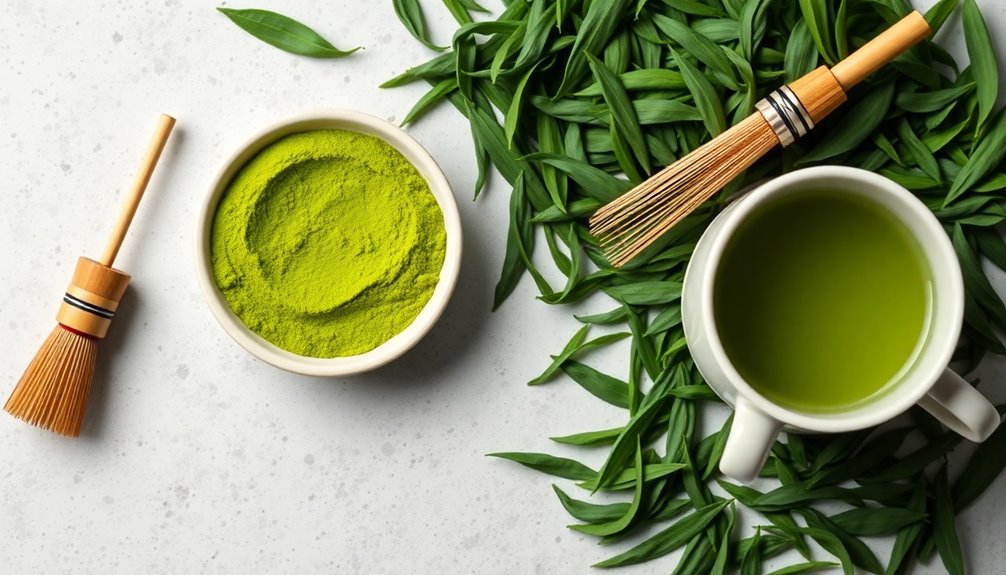Japanese tea emphasizes subtlety, mindfulness, and tradition, using precise techniques like whisking matcha or gentle steeping for delicate flavors. Unlike Western methods, which often prioritize quick brewing and stronger tastes, Japanese practices focus on harmony and balance, creating a ritualized experience. Compared to Chinese tea’s multiple infusions exploring evolving flavors, Japanese tea showcases craftsmanship and tranquility. If you keep exploring, you’ll discover how these traditions shape a unique and mindful tea culture.
Key Takeaways
- Japanese tea emphasizes delicate flavors, harmony, and mindfulness, contrasting with Chinese tea’s focus on multiple infusions and flavor evolution.
- Matcha involves whisking powdered tea for a frothy texture, unlike Chinese and Western teas which typically steep whole leaves.
- Japanese brewing uses precise water temperatures and utensils, highlighting ritual and tradition, whereas Western methods prioritize quick, strong infusions.
- Chinese tea often involves multiple short infusions to explore changing flavors, differing from Japan’s deliberate, single-brew focus.
- Cultural values like tranquility and craftsmanship are central to Japanese tea, setting it apart from the more utilitarian or social approaches of other cultures.
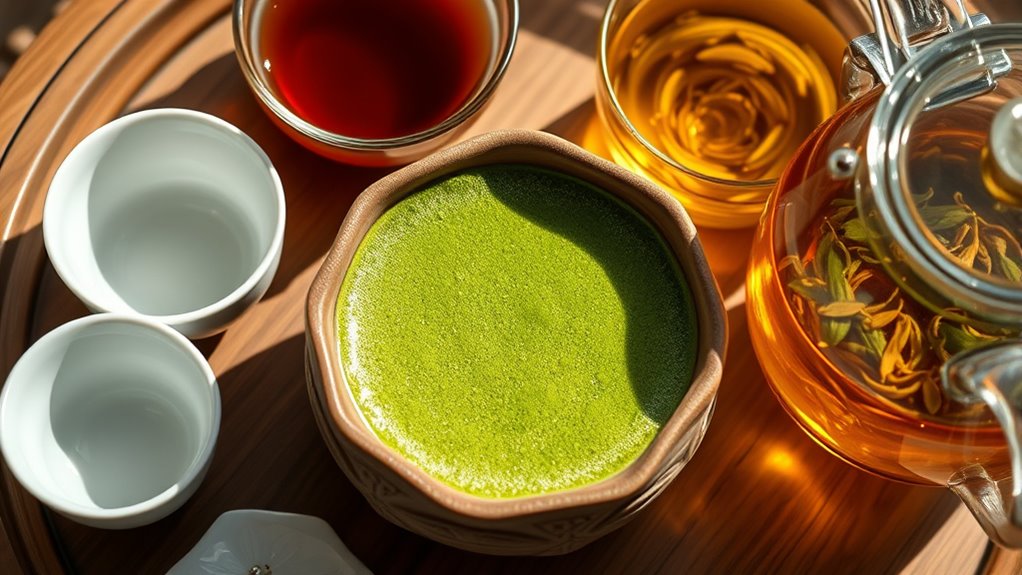
Japanese tea stands out for its unique flavors, preparation methods, and cultural significance, making it distinct from other types of tea around the world. When you participate in a traditional tea ceremony, you’re not just drinking tea; you’re engaging in a ritual that emphasizes harmony, respect, purity, and tranquility. This ceremony, often called “chanoyu” or “chado,” showcases the meticulous brewing techniques that have been refined over centuries. During the ceremony, every step—from selecting the tea utensils to the precise movements—serves to create a mindful experience. The way you prepare the tea is as important as the tea itself, highlighting the importance of tradition and mindfulness.
Japanese tea embodies tradition, mindfulness, and refined craftsmanship, transforming every sip into a harmonious ritual.
The brewing techniques in Japanese tea preparation are deliberate and precise, designed to bring out the tea’s subtle flavors and aroma. For example, matcha, a finely powdered green tea, requires whisking with a bamboo chasen until a frothy top forms. This process isn’t rushed; it’s about creating a smooth, velvety texture that balances the tea’s natural bitterness with its fresh vegetal notes. Conversely, brewing sencha involves steeping whole tea leaves in hot water at carefully controlled temperatures, usually around 70-80°C. This temperature control ensures that the leaves release their delicate flavors without becoming bitter. The water’s temperature and steeping time are critical, and adjusting these parameters can influence the tea’s taste profoundly. Additionally, the temperature control in Japanese tea brewing reflects a broader cultural emphasis on harmony and balance.
Compared to other teas, Japanese brewing techniques tend to be more ritualized and precise, emphasizing the importance of each step. In Chinese tea, for instance, brewing might involve multiple short infusions of whole leaves, highlighting the tea’s evolving flavors over time. In contrast, Western methods often focus on larger quantities of tea steeped in boiling water, prioritizing quick preparation and strong flavors. Japanese methods, however, prioritize subtlety and balance, often using specific utensils like the chawan (tea bowl) and chasen to enhance the sensory experience.
This emphasis on careful brewing techniques reflects the cultural values embedded in Japanese tea practices. It’s about more than just making a cup of tea; it’s about cultivating a moment of mindfulness and appreciation. When you learn these methods, you’re not just preparing tea—you’re participating in a centuries-old tradition that values precision, respect, and tranquility. That’s what makes Japanese tea and its brewing techniques truly unique compared to other tea cultures around the world.
Frequently Asked Questions
What Are the Health Benefits Unique to Japanese Teas?
Japanese teas, like matcha and sencha, offer unique health benefits you can’t find elsewhere. They’re rich in antioxidant properties that help protect your cells from damage. Plus, their caffeine content boosts your mental alertness without the jitters. Drinking Japanese tea regularly supports your overall health, enhances focus, and helps fight free radicals, making it a perfect addition to your daily routine for both mind and body wellness.
How Do Japanese Tea Cultivation Methods Differ From Other Regions?
Think of Japanese tea cultivation as a delicate art, like mastering a traditional craft. You’ll find they use specific tea plant varieties, such as Yabukita, prized for flavor and quality. Their cultivation techniques, including shading before harvest and precise plucking methods, differ from other regions. These practices enhance flavor and aroma, showing Japan’s dedication to quality and subtlety in every leaf they nurture, much like a carefully composed symphony.
Are There Specific Japanese Teas Suitable for Different Seasons?
You’ll find seasonal tea varieties in Japan perfectly suited to each season. In spring, you might enjoy sakura-infused teas, while summer calls for cooling, grassy gyokuro. Autumn features richer, roasted teas like hojicha, and winter offers warm, comforting matcha. These seasonal options highlight regional flavor differences, allowing you to experience Japan’s diverse climate and cultivation traditions through your tea choices throughout the year.
What Traditional Japanese Tea Ceremonies Influence Global Tea Culture?
Have you ever wondered how Japanese tea ceremonies shape global tea culture? These traditional ceremonies, like Chanoyu, influence tea preparation and ceremonial customs worldwide. They emphasize mindfulness, precision, and respect, inspiring modern tea practices. By incorporating these customs, global tea culture gains depth and elegance. The rituals remind us that tea isn’t just a beverage but an art form that connects tradition with contemporary appreciation.
How Does the Flavor Profile of Japanese Teas Compare to Chinese or Indian Teas?
You’ll notice that Japanese teas often have delicate, umami-rich flavor nuances, emphasizing freshness and subtle sweetness. Their brewing techniques focus on precise temperature control to preserve these qualities. In contrast, Chinese teas might feature more complex, floral or earthy notes, while Indian teas tend to be bold and malty. Your experience varies based on these flavor nuances and the specific brewing methods, shaping each tea’s unique character.
Conclusion
As you sip your tea, imagine wandering through a serene Japanese garden, where each leaf whispers traditions passed down through time. Japanese teas, with their delicate umami and meticulous craftsmanship, invite you into a tranquil world unseen in other brews. Like a quiet pond reflecting a mountain’s silhouette, they offer a moment of calm amidst life’s chaos. Embrace this peaceful ritual, letting each cup carry you closer to nature’s timeless harmony.

